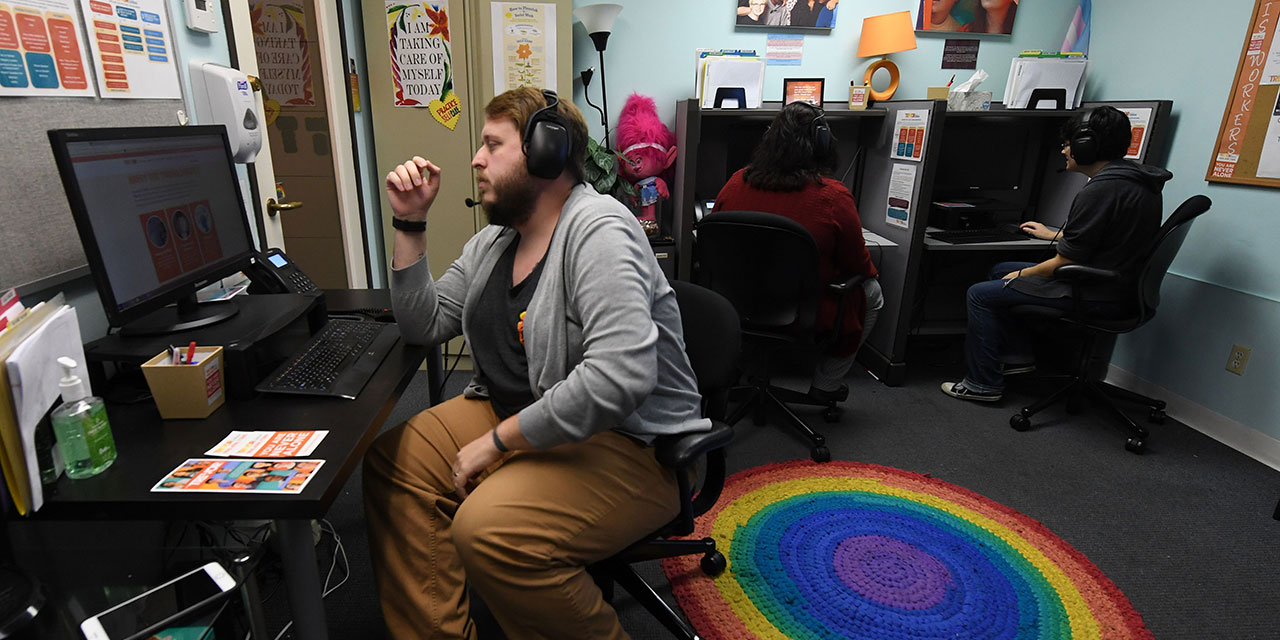The problem with child-welfare agencies, says David Kelly, a key official at the federal Children’s Bureau, is that they are too focused on rescuing children, and should instead be working on “strengthening communities.” Kelly is wrong—the system is failing to rescue the kids that it’s supposed to be helping—and his recommended approach is likely to distract child-welfare agencies from their most important function.
A civil servant who began working at the Children’s Bureau during Barack Obama’s administration, Kelly opened a recent talk to a group of “parents’ rights” advocates and child-welfare attorneys by recycling the canards regularly repeated by child-welfare officials. The current system, he said, is “perfectly designed to bring more and more children into care and do little to help the parents or their families. It’s perfectly designed to perpetuate and exacerbate the trauma, disproportionality, disparity, dependency, and harmful intergenerational cycles of family destruction. It is perfectly designed to devalue families and undermine communities.”
Finally, a reason to check your email.
Sign up for our free newsletter today.
In fact, child-welfare workers are trained to keep kids with their families at all costs. “Family reunification” has been the name of the game for decades. In New York City, for instance, according to a report last year from the Department of Investigation, the majority of child-maltreatment incidents (which include cases of abuse and severe neglect) occurred while foster kids were visiting their biological parents. In Pennsylvania, a recent report found that two-thirds of the children who were murdered, or who experienced a near-fatality as a result of abuse or neglect, were involved with the local social-services agency prior to or at the time of the incident. Arizona reported that 56 percent of the 79 children who died from maltreatment in that state in 2017 came from families with prior involvement with a child protective-services agency.
The system regularly sends kids to live with immediate family members known to have been guilty of abuse or neglect—or to live with extended family, even if those family members have had no prior contact with the child, live across the country, or exhibit dysfunctions (like substance abuse) of their own. Talk to any child-welfare worker, and he or she will tell you how much harder it is to remove a child from a home than simply to offer “preventive services” to the family, such as anger-management or parenting classes. Family-court judges would rather give parents three more months, six more months, even another year to clean up their acts. Terminating parental rights is a protracted process, and parents get every opportunity to “redeem” themselves.
Kelly parrots the common complaint about “disproportionality” and “disparities” in child welfare, where black children get removed from their family homes at a greater rate than white children. But he fails to acknowledge that these disparities have more to do with racial differences in poverty, education, and family structure than with systemic bias. According to data from the Department of Health and Human Services, the incidence of physical abuse for a child living with a single parent and a “partner” is 19.5 per 1,000—almost twice that of children living with unmarried biological parents or a parent married to a nonbiological parent, and almost ten times as high as for children living with married biological parents. Since 70 percent of all births to black women occur outside of marriage, compared with only 29 percent of all births to white women, it follows that black children are in more danger of abuse.
The point of Kelly’s speech, though, was to tell his audience the “good news”: thanks to last year’s “Family First” law, states can now use Title IV-E foster-care funding for more “preventive services.” He explained: “If we’re going to change what the country thinks about child welfare and what it’s intended to do, if we’re going to change the language, we need to stop mythologizing vulnerable families. We need to let go of the system that was designed to rescue children and construct a system that’s designed to promote health and well-being for all families.”
Never mind that few programs have been shown to “promote health and well-being for all families”—a problem now tripping up states that want to use this new funding stream. And what evidence exists that government could achieve such a goal, or that it should even try? If we expand the child-welfare system’s mission to promotion of health and well-being for all families, we will expand state authority to intrude into every household, even safe, functional ones. Let’s leave promotion of family well-being to religious and other social institutions, and let government handle the serious cases where children’s lives are in danger—a task at which government’s performance already leaves much to be desired.
Naomi Schaefer Riley is a senior fellow at the Independent Women’s Forum and a resident fellow at the American Enterprise Institute.
Photo: asiseeit/iStock




